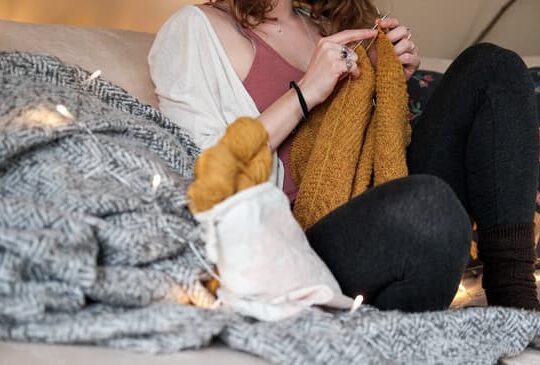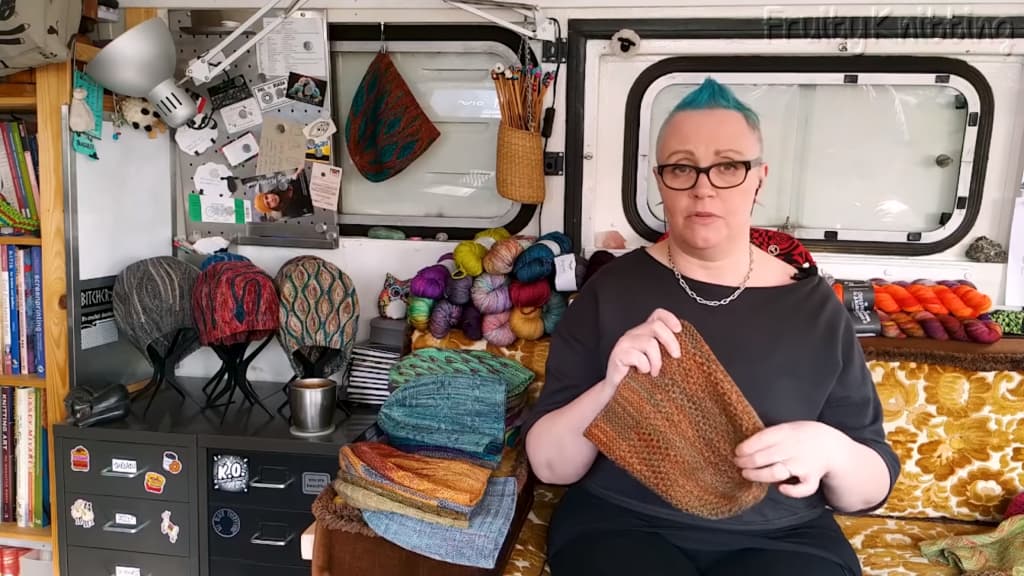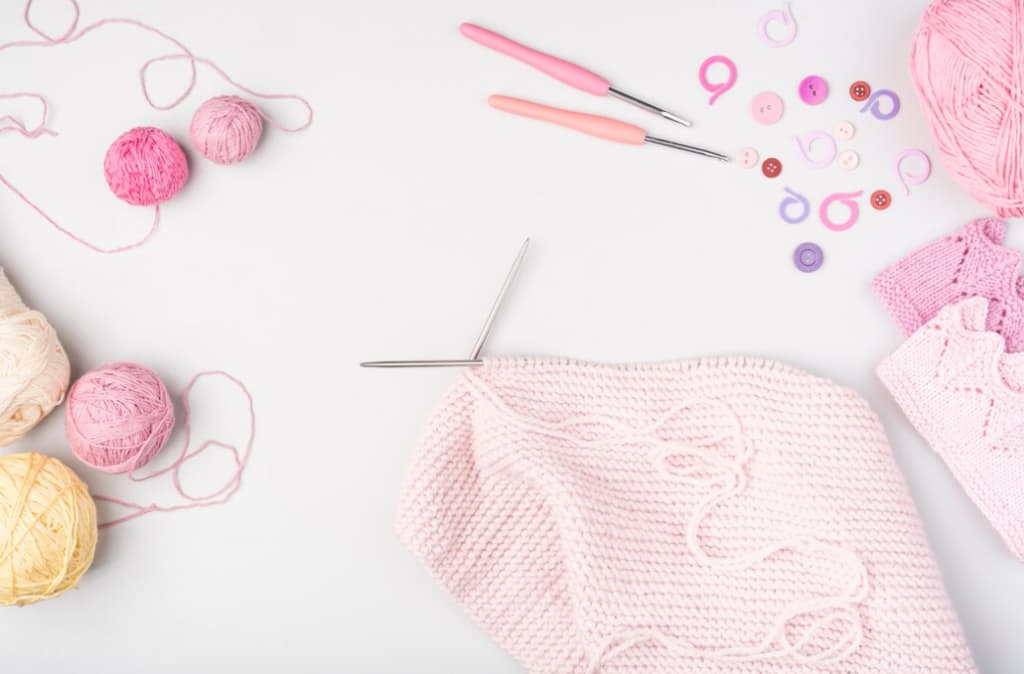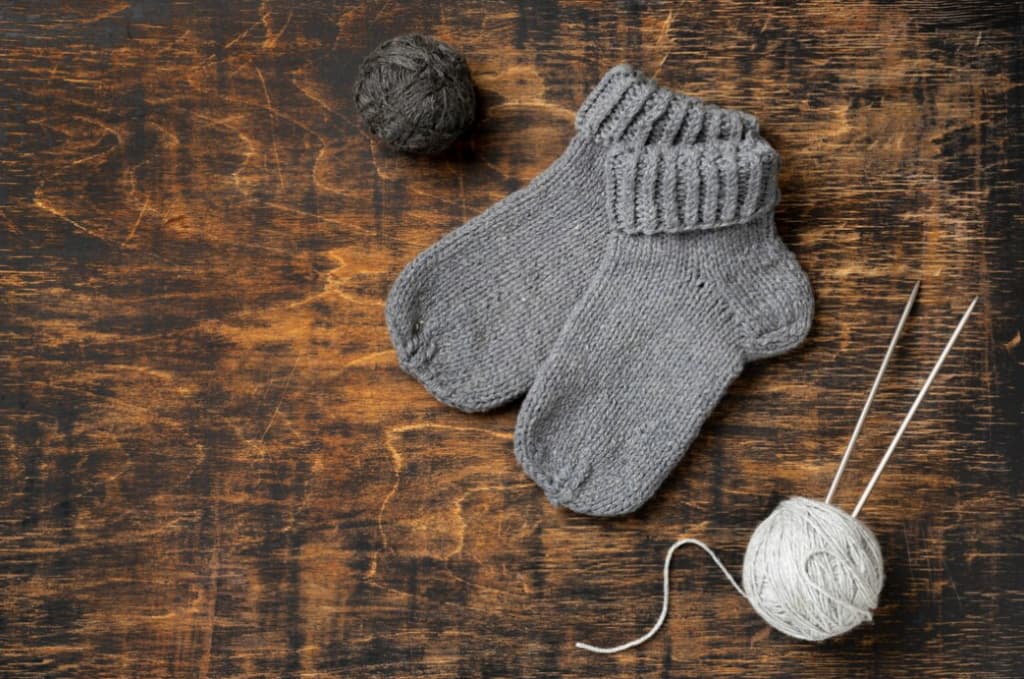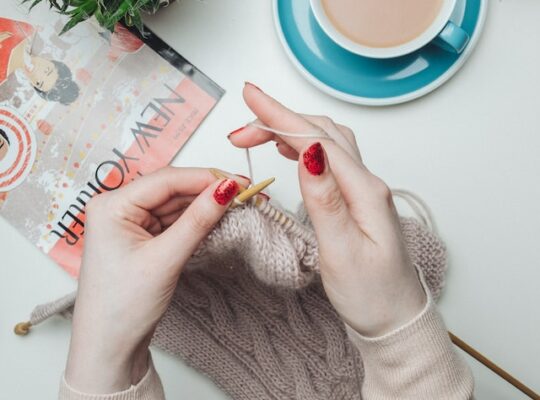People often wonder about the difference between knitting and crocheting. To someone not familiar with these crafts, they might seem similar, involving yarn and tools to create magical items.
Let’s explore their differences and similarities to assist those considering a new hobby. Examining aspects such as the complexity of learning, tool handling, patterns, and the final attributes of the fabric will help you decide which craft suits you best.
Vital Equipment for Knitting and Crocheting

For both knitting and crocheting, it’s crucial to have the right tools. Here’s a basic list:
For Knitting:
- Knitting Needles: Available in various materials like bamboo, metal, or plastic, and in different sizes to suit yarn of various weights;
- Yarn: Select yarn suitable for your project, considering weight, fiber content, and color;
- Scissors: Sharp, small scissors for trimming yarn;
- Tapestry Needles: Blunt-ended needles for weaving in yarn ends and sewing;
- Stitch Markers: To mark specific stitches or points in a pattern;
- Measuring Tape: To check the width and measure finished items;
- Row Counter: Useful for keeping track of rows or pattern repeats.
<iframe width=”560″ height=”315″ src=”https://www.youtube.com/embed/m2Ky76O116A?si=yxSo6Sm2cz_gD95M” title=”YouTube video player” frameborder=”0″ allow=”accelerometer; autoplay; clipboard-write; encrypted-media; gyroscope; picture-in-picture; web-share” allowfullscreen></iframe>
For Crocheting:
- Crochet Hooks: Available in various sizes to match different yarn weights;
- Yarn: As with knitting, choose yarn suitable for your project;
- Scissors: For cutting yarn, just like in knitting;
- Tapestry Needles: Used for weaving in ends and sewing;
- Stitch Markers: To mark stitches or rounds;
- Measuring Tape: For measuring the width and finished items;
- Row Counter: Helps keep track of the number of rows or pattern repeats.
Additional tools like blocking mats and pins for shaping and sizing finished items, stitch holders for temporarily securing stitches, and a needle gauge to determine needle or hook size can also be handy.
These are the basics, but the specific tools you’ll need may vary depending on the project or technique you’re working on!
Knitting Essentials
Knitting needles come in a variety of shapes, sizes, and materials, each suited for different projects and techniques.
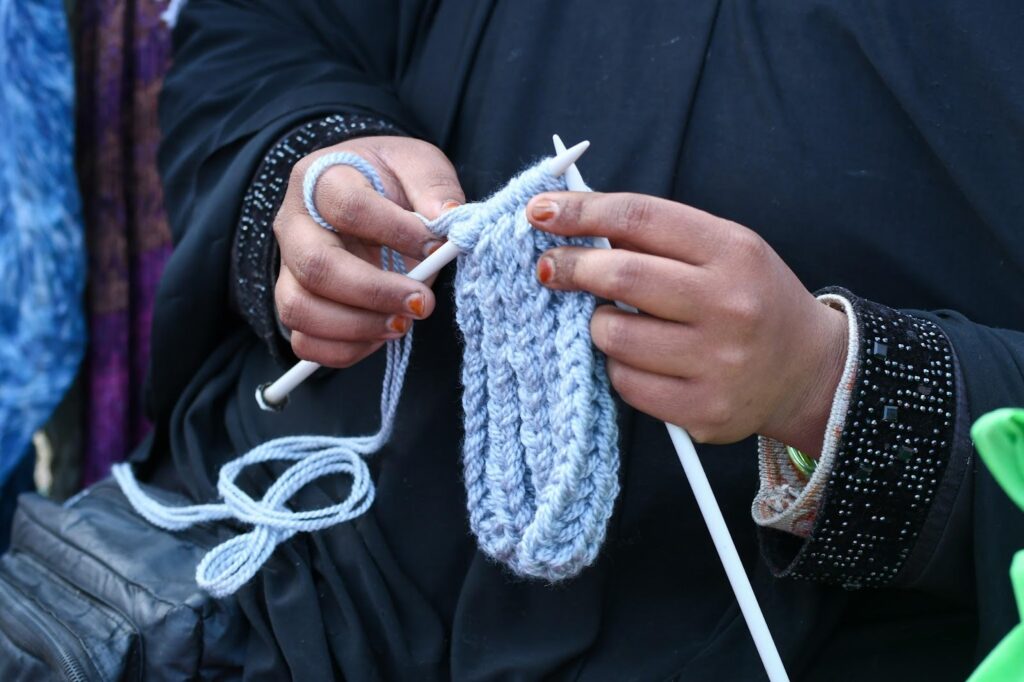
Here’s a brief rundown:
- Straight Needles: These long, single-pointed needles, often made from materials like metal, wood, or plastic, are perfect for flat items like scarves or blankets;
- Circular Needles: Featuring two needle tips connected by a flexible cable, they’re versatile and great for circular knitting (like hats or sweaters) or for large, heavy projects, as they distribute weight evenly;
- Double-Pointed Needles (DPNs): Available in sets of four or five, these are used for circular knitting, especially for smaller circumferences like socks or sleeves;
- Interchangeable Needle Sets: These sets allow the mixing and matching of different needle sizes and cord lengths, offering flexibility and reducing the need to buy individual needles. They require an initial investment but offer convenience.
Needles made from bamboo, metal, or plastic each have their unique features. Bamboo needles are generally lightweight and offer a firmer grip, while metal needles are smooth and suitable for quicker knitting.
Knitting often requires acquiring needles of various sizes and types depending on the project, which can make this hobby more expensive initially compared to crocheting. And you’re correct that a crochet hook is very important for knitters – it’s a handy tool for picking up dropped stitches, adding embellishments, and other knitting techniques.
Crochet Basics
Crocheting primarily revolves around the hook, and variations in hook sizes and materials significantly influence the size and texture of the stitches.
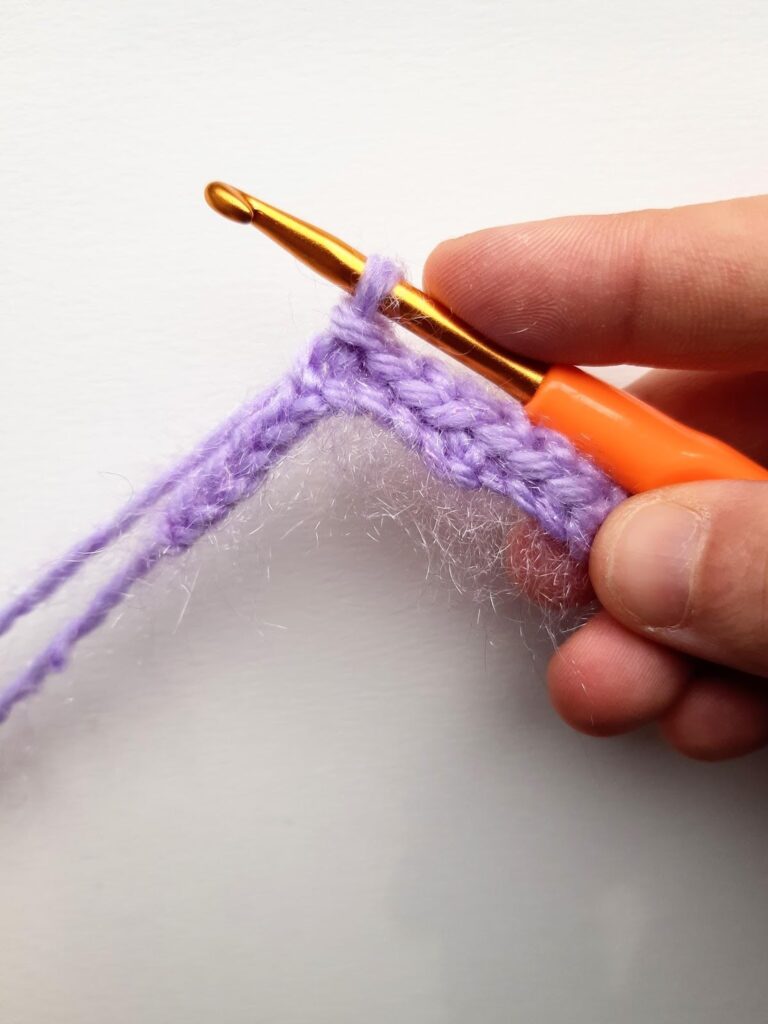
Here’s more about crochet hooks:
- Hook and Shaft: The shaft of the hook is where you hold it, and the hook at the end catches the yarn to create stitches. The hook size determines the size and tension of the stitches;
- Variety in Sizes and Materials: Crochet hooks come in various sizes, from very thin for delicate projects like lace to large hooks for thick yarn. They can be made of aluminum, plastic, bamboo, wood, or even ergonomic materials to suit different preferences and hand comfort;
- Handle Style: Some hooks have thicker or ergonomic handles, designed to reduce strain and fatigue during prolonged crocheting. This can be beneficial for those who crochet frequently and for long periods;
- Economical: Unlike knitting needles, which vary in length and type, crochet hooks mainly differ in size, ultimately making their acquisition more economical. By purchasing hooks of different sizes, you can undertake a wide range of projects.
Crocheting indeed is simpler in terms of the necessary tools. With a good set of hooks in various sizes and possibly a few specialized hooks, you are well-equipped to handle most crochet projects.
Versatility and Projects
The flexibility of knitwear shines in its ability to create fabrics with a smooth, flowing drape. This makes it ideal for crafting cozy sweaters, cardigans, scarves, and shawls. The variety of stitch types available in knitting allows for intricate patterns – from cable knitting to lace and textured motifs.
Beyond clothing, knitting extends to home decor. Blankets, throws, pillows, and even curtains showcase the potential of this craft to transform simple yarn into functional and decorative household items.
The adaptability of this technique isn’t limited to conventional use. Modern knitting has ventured into innovative areas, crafting jewelry, bags, and even architectural installations from yarn. The pliability of knitted fabric enables the creation of sculptural forms and contemporary art pieces, pushing the boundaries of traditional applications.
The Versatile World of Crochet
Crochet, with its denser and textured fabric, lends a distinctive charm to various projects:
- It’s ideal for crafting durable items like amigurumi (crocheted toys), hats, bags, and baskets. The intricate technique of knotting and looping allows for detailed patterns, making crochet particularly suitable for decorative motifs, edgings, and trims;
- Crochet’s adaptability extends to fashion: it’s used not only for clothing but also for accessories such as hats, gloves, and elaborate lace shawls. The ability to create complex geometric shapes and three-dimensional structures makes it perfect for crafting intricate doilies, table runners, and home decor elements.
Furthermore, this craft has carved its niche in mixed-media projects, where crochet interacts with other materials like wire or fabric, creating innovative wearable art, jewelry, and even wall hangings.
Blending Techniques and Crossing Boundaries
What’s particularly interesting in crochet is its tendency for crossover and fusion. Crocheted items can incorporate knitted elements and vice versa, resulting in stunning hybrids that combine the best of both worlds:
- Think of sweaters with crocheted lace details or blankets with knitted panels framed by crocheted edging;
- The evolution of crochet and freeform knitting allows artisans to push boundaries, using both techniques in unconventional ways to create unique, expressive items that transcend traditional definitions and redefine the limits of working with yarn.
In essence, both crochet and knitting offer a vast field for creativity. They transform a simple ball of yarn and a set of needles or a hook into an array of limitless projects.
Learning Curves and Accessibility
The learning curves and accessibility of knitting and crocheting differ in various aspects, catering to different preferences and learning styles.
Learning Knitting
Knitting is often considered somewhat more challenging for beginners due to the use of two needles and the need for coordination between them:
- The initial challenge lies in mastering basic stitches, understanding how to hold the needles, and managing tension;
- However, knitting offers advantages in correcting mistakes. Errors are often easier to rectify as one can unravel stitches and return to the error spot without redoing the entire project. The repetitive nature of knitting also aids in memorizing patterns and stitch sequences.
Online tutorials, books, and courses provide beginners with numerous resources, offering step-by-step guidance on mastering knitting techniques. Many find solace in knitting communities, ready to help with advice and support.
Accessibility of Crochet
Conversely, crochet often appeals to beginners due to its relatively simple technique. Using a single hook allows focusing on stitch creation without managing multiple needles:
- Basic stitches – chain, single crochet, double crochet – are simpler to grasp compared to knitting;
- Another advantage of crochet is its forgiving nature when correcting mistakes. Correcting errors is often simplified thanks to the ability to unravel individual stitches without undoing the entire row.
As with knitting, crochet enthusiasts can find a plethora of online resources – from instructional guides to patterns, making it accessible to beginners. The supportive crochet community fosters a welcoming atmosphere for newcomers, offering tips and inspiration.
Preference and Comfort in Crafting
Choosing between knitting and crocheting often boils down to personal preference and comfort. Some find knitting more intuitive due to its rhythmic and repetitive motions, while others prefer crocheting for its ease of mastering basic stitches and quick project completion.
Accessibility is also a factor. Crochet, requiring only one hook, may be more accessible for those looking to start quickly or with limited hand dexterity. Knitting with two needles demands more patience and practice.
Diversity in Crafting Techniques
Both knitting and crocheting offer a vast array of techniques and patterns, catering to a wide range of interests and skill levels. After mastering the basics, knitters and crocheters can progress to more advanced techniques, special stitches, lace, colorwork, and even intricate patterns, allowing for continual growth and learning.
Thus, while crochet and knitting each have their unique aspects, they cater to different learning styles and preferences. The accessibility, simplicity, and learning process may differ, but both crafts offer extensive opportunities for creativity and self-expression, warmly welcoming newcomers to the world of fiber art.
Ease of Crochet vs. Knitting
The question of whether crocheting or knitting is easier often comes down to personal preferences and individual learning styles. However, some general comparisons can be made to highlight aspects where one craft may seem easier for certain individuals.
Crocheting:
- Simplicity of tools: Crocheting involves using a single hook, making it simpler to handle than knitting needles;
- Fewer basic stitches: Crocheting has a smaller set of basic stitches such as the chain, single crochet, and double crochet, which some find easier to grasp initially;
- Easier error correction: Correcting mistakes in crochet tends to be simpler, as unraveling a few stitches to fix errors is more straightforward.
Knitting:
- Coordination of two needles: Knitting involves the coordination of two needles, which may seem more challenging for beginners;
- Greater variety of techniques: Knitting offers a wider array of stitches and techniques, leading to more complex designs but may be daunting for beginners;
- Smoothness of fabric: Knitting often results in a fabric with a smoother, more flowing drape, which some find more appealing.
Individual preferences, learning style, and prior experience can significantly influence which craft seems easier. For some, the repetitive movements in knitting feel more intuitive; others appreciate the simplicity of crochet’s basic stitches.
Ultimately, both crafts have their unique attributes and can bring immense satisfaction once mastered. Beginners might benefit from trying both crocheting and knitting to see which aligns more with their preferences and ease of learning. Some even enjoy engaging in and mastering both crafts, relishing the creative possibilities each technique offers.
Choosing Between Knitting or Crocheting a Blanket
Deciding whether to knit or crochet a blanket hinges on personal tastes, the desired look and feel, as well as the time and effort you’re willing to invest.
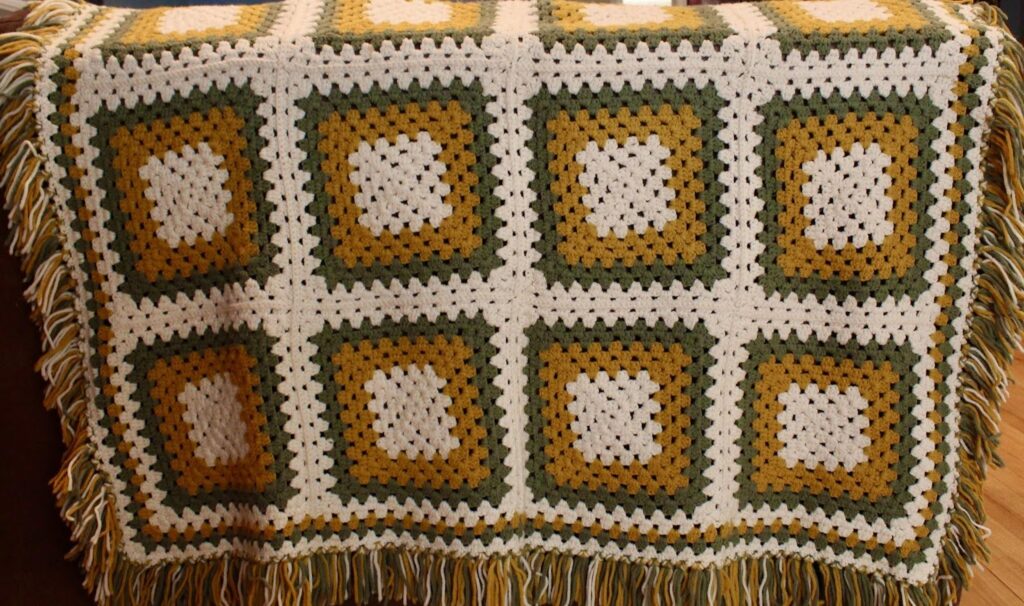
Both crafting methods have their advantages in blanket making.
Knitted Blankets:
- Draping and Texture: Knitted blankets often exhibit a smoother and more fluid drape, a characteristic of the knit fabric. They can feature intricate stitch, cable, or color patterns, creating visually appealing textures;
- Time and Yarn Usage: Knitting typically produces a narrower fabric than crocheting, so knitting a blanket might take more time or require more rows to reach the desired size. However, knitting a similarly sized blanket generally uses less yarn than crocheting;
- Ease of Varying Stitches: Knitting offers a wide range of patterns that can be easily incorporated into the blanket’s design, making it versatile for creating unique textures and designs.
Crocheted Blankets:
- Thickness and Warmth: Crocheted blankets often have a denser and more textured structure due to crochet’s stitching characteristics. This results in a warmer and cozier blanket, especially when bulky yarn is used;
- Speed of Completion: Crochet typically covers a larger surface area faster than knitting, making it a quicker option for finishing a blanket;
- Technique Simplicity: Crochet might be simpler for beginners due to fewer basic stitches and easier error correction, making it a good choice for those new to needlecraft.
Ultimately, the choice between knitting or crocheting a blanket depends on personal preferences, the desired look and feel of the finished item, and your comfort level and experience with each craft. Some crafters even combine both crochet and knitting techniques in one blanket, leveraging the strengths of both crafts for unique designs.
Consider factors like yarn type, preferred pattern complexity, and the time you’re willing to devote to the project. Both crochet and knitting yield beautiful and satisfying results, so the best choice will align with your preferences and goals for the blanket.
Is It Cheaper to Knit or Crochet?
The cost difference between crocheting and knitting can vary based on several factors, and it’s not always clear-cut which is invariably cheaper.
Here are some considerations:
Tools and Materials:
- Needles/Hooks: Crocheting might initially seem more economical as it requires only one hook compared to knitting, which often uses pairs of needles. However, the price of individual needles/hooks can vary based on the material (metal, wood, plastic) and quality;
- Yarn: The cost of yarn is a significant factor for both crafts. The amount and quality of yarn needed for a project can greatly affect the overall cost. Crocheting often uses more yarn due to its denser stitch structure, while knitting may use less yarn depending on the project.
Patterns and Complexity in Crafting
The complexity of projects, whether intricate patterns or elaborate designs, can necessitate more yarn or specific techniques, impacting the overall cost regardless of whether you’re knitting or crocheting.
- Work Speed: Generally, crocheting might be quicker for some projects due to its denser stitch structure. If time is a crucial factor, the faster completion of a crochet project may offset the difference in material costs;
- Yarn Preferences: Choices in yarn type, brand, and fiber content vary, influencing the total cost. Similarly, if one craft brings you more joy or convenience, you might be inclined to invest more in it;
- Ultimately, the question of whether knitting or crocheting is cheaper can vary depending on the specific project, materials used, design complexity, and personal preferences.
Consider factors like the quality of yarn, the quantity needed, as well as the overall enjoyment and satisfaction derived from each craft, rather than just focusing on the initial investment in tools or materials. Both knitting and crocheting can be cost-effective hobbies or crafts, depending on your approach and choices.
Yarn for Knitting and Crocheting
Yarn is a versatile material used for both knitting and crocheting. In both crafts, it serves as the primary material for creating fabric. Yarn comes in various fibers, weights, colors, and textures, allowing its use for a range of projects and techniques in both knitting and crocheting.
- Yarn for Knitting: In knitting, yarn is manipulated with needles to create stitches. Knitters use yarn of varying weights (from very fine to very thick) and fiber compositions (wool, cotton, acrylic, alpaca, silk, etc.) based on project requirements. Different yarn weights correspond to different needle sizes and gauges (tension);
- Yarn for Crochet: In crocheting, yarn is used to form stitches. Like knitting, factors such as weight, fiber content, and texture are considered when choosing yarn. Crocheting can utilize yarn of various weights and fiber contents, and some projects may require specific yarn characteristics to achieve the desired texture or pattern;
- Yarn Characteristics: Yarn labels, whether used for knitting or crocheting, indicate the weight (e.g., fingering, worsted, bulky), fiber content (wool, cotton, acrylic), recommended needle or hook size, and care instructions (hand wash, machine wash, dry clean only).
Both knitters and crocheters explore different yarn options according to their preferences and project requirements. The choice of yarn affects the texture, drape, and appearance of the final product, making it a crucial element in both knitting and crocheting.
Conclusion
Choosing between knitting and crocheting involves weighing various factors. Some prefer the precise stitches, smoother finish, and ease of correcting mistakes in knitting, while others enjoy the speed and texture of crocheting. Understanding the differences in tools, techniques, and final outcomes can help make an informed decision.
Whether you choose the rhythmic nature of knitting or the structured patterns of crocheting, both crafts offer immense creative satisfaction. Ultimately, the choice between these two crafting styles boils down to personal preference, the desired end product, and the pleasure derived from the process itself.

